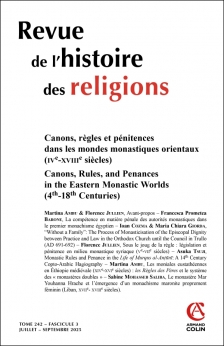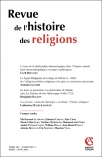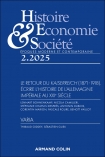
REVUE DE L'HISTOIRE DES RELIGIONS (3/2025)
Pour acheter ce numéro, contactez-nous
Recevez les numéros de l'année en cours et accédez à l'intégralité des articles en ligne.
L’histoire des moniales en Éthiopie médiévale demeure un sujet quasi inexploré. Cet article a pour objectif d’identifier la présence de moniales rattachées au mouvement monastique eustathéen, persécuté par le pouvoir royal, dans le nord du royaume, et installées au sein de « monastères doubles ». Cette enquête se fonde sur une documentation hagiographique et normative issue de la cour royale et du scriptorium eustathéen. Les Règles des Pères évoquées dans ces textes, ainsi que les Canons, tirent leur origine des normes imposées par les fondateurs eustathéens, mais aussi d’une inspiration égyptienne. Justifiant le rôle de puissantes abbesses, les sources que cette contribution vise à mettre en lumière précisent les normes comportementales et pénitentielles des moniales chez les eustathéens.
The history of nuns in medieval Ethiopia remains a largely unexplored topic. The aim of this paper is to identify the presence of nuns linked to the Ewosṭatean monastic movement, which, settled within “doublemonasteries” in the north of the kingdom, was persecuted by the royal power. This inquiry is based on hagiographic and normative documentation from the royal court and the Ewosṭatean scriptorium. The Rules of the Fathers referred to in these texts, as well as the Canons, derive from the norms imposed by the Ewosṭatean founders, but also from Egyptian inspiration. The sources that this contribution aims to bring to light clarify the behavioural and penitential norms of nuns among the Ewosṭateans, while also justifying the role of powerful abbesses.

